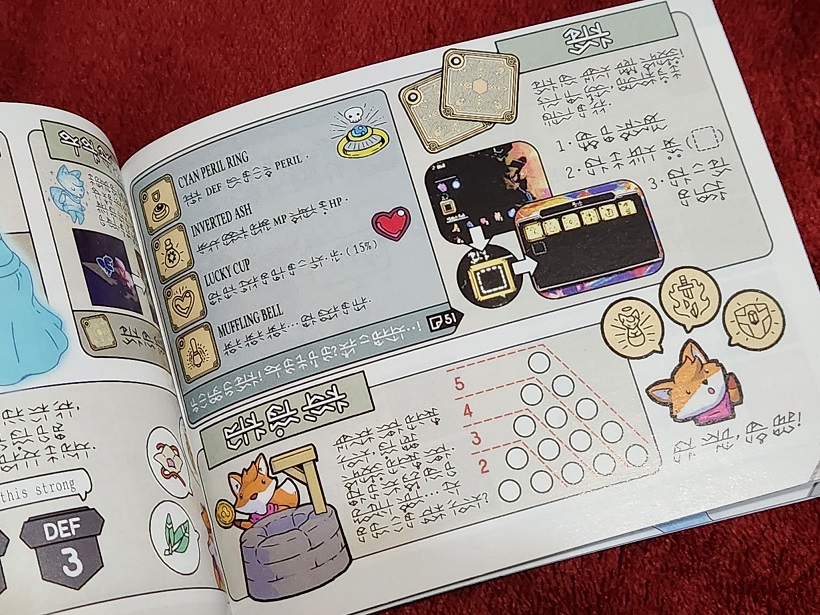Tunic is a game that on the surface looks like a throwback to the original Legend of Zelda, from the character’s design to the general aesthetic of the world. This means it’s also a game I’ve kept my distance from until I had the chance to play it. And as expected, saying Tunic is just The Legend of Zelda is very reductive. But it went deeper than anticipated.

Developed by Isometricorp Games and published by Finji, Tunic was immediately striking when it began to show up. It will be difficult to talk about Tunic in great detail here because if you are interested in this game then it is in your best interest to play through it as blind as possible. This is a game of discovery that opens up more and more in unexpected ways as you play.
The resemblance to The Legend of Zelda and Link’s Awakening immediately grab your attention. You’re a young fox who wakes up on an Island, gradually progressing as you accumulate items and knowledge. An isometric action-adventure game, it starts with many of the trappings of older Zelda games. Find a sword to chop through bushes, keys to open doors, and hidden paths to treasure chests. There are some elements that feel like Souls, and I know that’s a hackneyed thing to say. There’s some similarity mechanically in terms of how stamina management works here, and how parrying works, and how you reclaim the gems you drop when you die. But these mechanics are fairly prevalent in action adventure games now, but I think the atmosphere and minimalist approach to storytelling are the stronger similarity. At least in tandem with those elements.
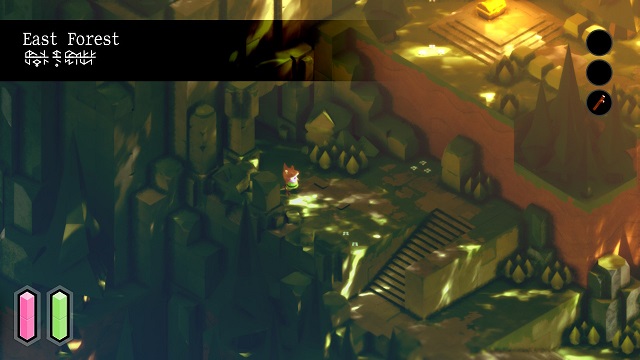
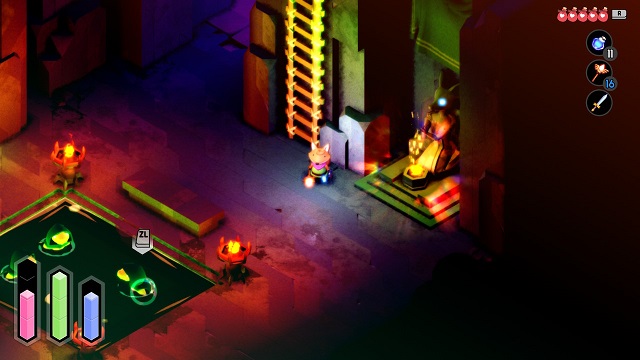
The narrative in Tunic is told through the actions of characters in the world, the state of buildings on the island, and through the manual. The manual is a really clever device in Tunic as you collect pages as one of your primary items throughout the game. The illustrations are again, much like The Legend of Zelda’s instruction booklet – cute character drawings for items and actions and detailed paintings for story elements and important features.
Tunic is a game that could feel directionless at a glance, but direction is provided through this manual. Especially early on, these pages provide your goals. Yes, you want to find and interact with these two specific locations. But these obstacles might be in your way. The manual pages provide maps from most locations throughout the game and if you go to these pages while you’re there – it will inidcate where you’re at with a little fox head on the map. And from these maps and pages you can figure out certain actions that you can take to interact with the world.
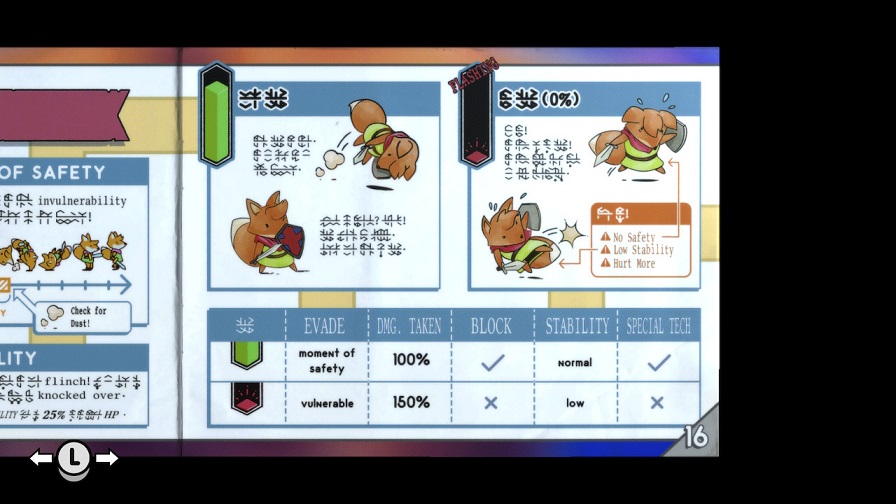
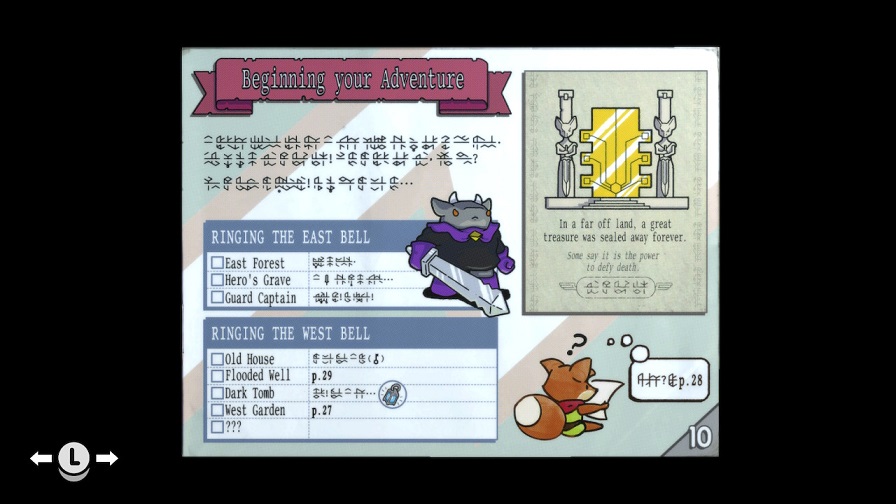
And it goes further. There are often notes or symbols scribbled on the page that provide invaluable clues for many of the more arcane secrets of Tunic. If you can remember renting a game in the 80’s, if it came with the manual in one piece – you might be lucky enough to find passwords or tips written on the memo pages or in the margins. Or hey, you’d just find some vulgarity. Sort of a toss-up really, ha ha.
At this point I’m used to looking through item descriptions to piece together story elements or just trying to get the vibe of a game. But this was such a fresh yet deeply nostalgic take for me that I was always excited to find another page of this book. That’s why you can see the influence of The Legend of Zelda or the Souls series, or you can see similar vibes to Hyper Light Drifter or Fez if you look enough – but Tunic is most importantly it’s own thing. It feels like a loveletter, sure, but it feels like it’s carved out its own niche here. I don’t know if other titles have done the manual mechanic, or have done it as well, but I’d love to know.
The minute to minute adventuring in Tunic throws you into many combat situations. Some of the enemies in Tunic wil harry you more than expected, with surprising aggression to their attacks and a lot of persistence in chasing you if you’re just trying to run through. But you have a lot of ways of dealing with these siutations, either through bottlenecking and kiting or the wide array of items you have at your disposal. There’s a surpring amount of enemies that work in tandem with each other to create situtations where they would have the upper hand. It makes each area’s combat encounters distinct and while it’s not overwhelming it was enough to keep me paying attention.
The bosses are quite good, and more demanding than expected. But while some took several attempts you learn something with each skirmish. You’re compelled to try different gear and items, you’re learning the timing of their attacks and finding their openings.
However, I found the adventure side of the game the real highlight. The world of Tunic is mysterious and melancholic, and often quite pretty. Sun dappled paths in the East Forest amidst the iconography of still revered ruins. The ways that Tunic continues to open up can be a slow burn, but satisfying all the same.
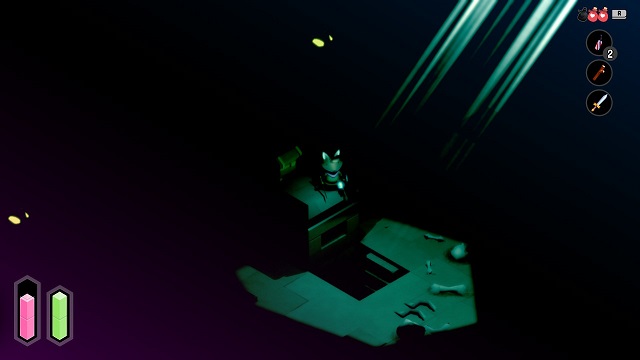
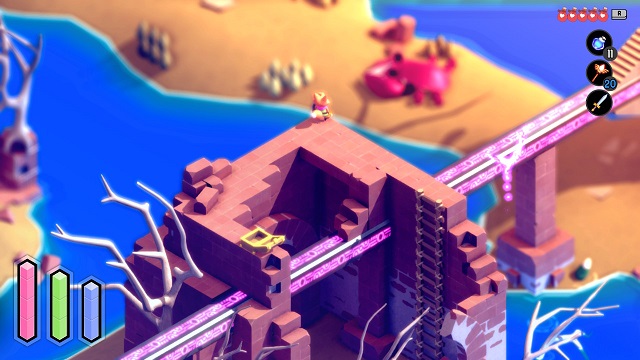
Tunic is the kind of game where you break out your scribbler and write down what you think you’ve determined as solutions to puzzles and what you think the manual is telling you.
As far as I can tell you can beat the game without going into some of the more obscure puzzles at the end. But they’re an important element to Tunic and I think if you’re open to the puzzle solving side of the game then you’re going to get more out of it. As of writing this, there’s stuff I haven’t figured out yet, and some of the things I did figure out took me a while to get there. But there’s honestly a level of familiarity there.
We checked every pot in Final Fantasy IV. We bombed and burned every rock and tree in The Legend of Zelda. We mapped every room of Legacy of the Wizard. Does that work for everybody? Of course not. But there were often moments where you had this gut feeling about something and it paid off. That’s where I got the most joy out of Tunic, saying “Oh! That worked!”
And this isn’t meant to discourage anyone who was looking into Tunic as a pure Legend of Zelda or Link’s Awakening style experience. In a sense this is just one natural path of progression for secrets and disocovery in games. Over the years I’ve heard a lot of commentary about how the way The Legend of Zelda handled hidden rooms and items was too arcane or poorly executed. I grew up with these games and I’ve never had that impression, I think “we took what we could get” is a disingenuous summary of those times because we also enjoyed what we got when the games were good. But times and expectations and playerbase change, which makes it so surprising that a game would build off of and evolve these design elements.
And to be fair, you don’t need to engage too deeply with the more obscure elements of Tunic. You can play most of this game using context clues in the world and the manual, and you can certainly reach credits without going too deeply into it. But if you want more from it, it’s there.
Tunic just feels like a very heartfelt game, both in terms of sending up its influences and the developers’ own vision. If Tunic clicks with you, it’s going to grip you. All it would have taken was a cute fox Zelda game for me to be content, but I’m glad I got more than that.
